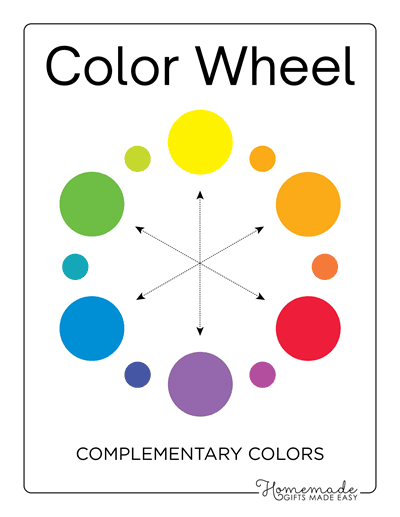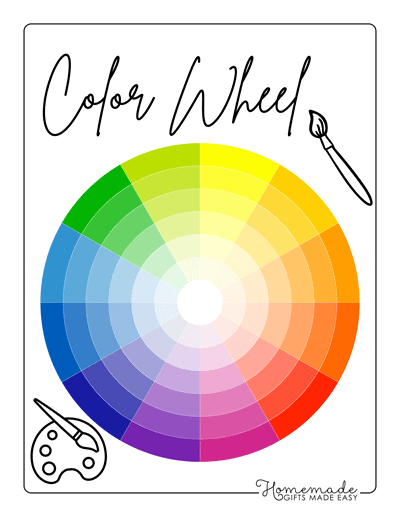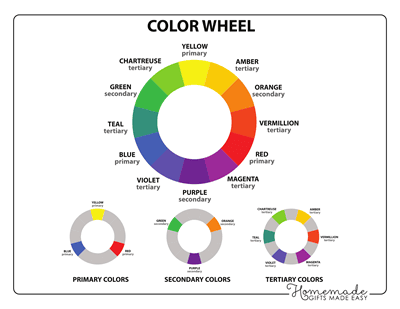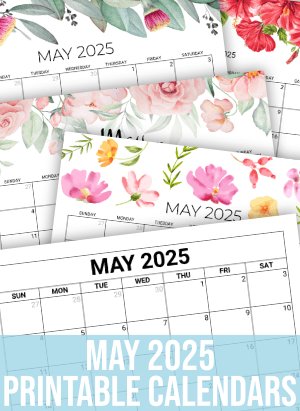Discovering Complementary Colors (with Free Color Wheel Printable)
Last updated: June 11, 2024 by Amanda
Love art? Do you want to learn all about complementary colors? Well, you’ve come to the right page if you're a total noob when it comes to color, and you wonder “Does mustard yellow go with neon orange”? Whether you’re a curious kid, a creative parent, or a dedicated art teacher, this blog has been written just for you.
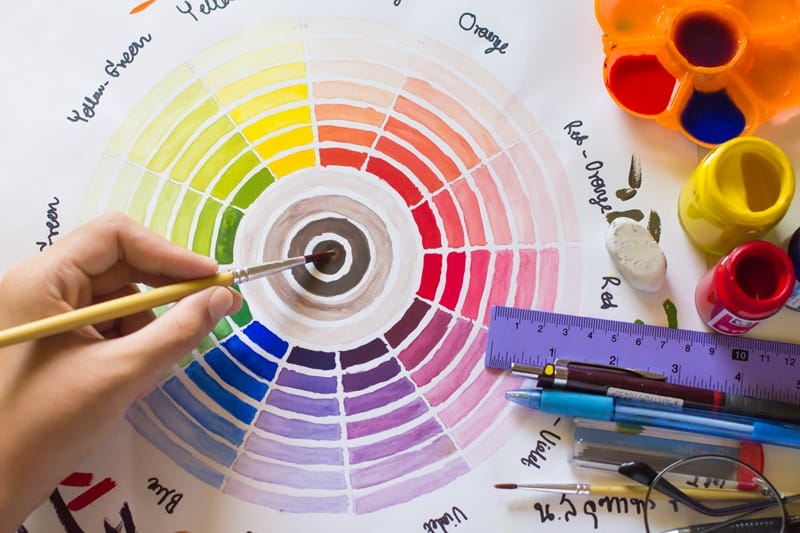
We’re diving into all the fun facts on the color wheel, exploring what makes opposite colors, and unlocking the secrets of the complementary color wheel too. We've also provided you three free color wheel printables to reference throughout your artistic experimentations. Color is an integral part of art, and using colors that go well together is SO important. Knowing what colors work well together can even be handy for picking out clothes! Grab your paintbrushes and get experimenting.
What are Complementary Colors?
Free! Color Wheel Download
Simple Color Theory
Mixing Complementary Colors
Basic Complementary Colors
How to Use
Frequently Asked Questions
What are Complementary Colors?
The simple answer is: Complementary colors are pairs of colors that are found opposite to each other on the color wheel. When placed next to each other, these colors create a stunning contrast, which makes each color pop.
A few IRL examples of complementary colors at work are sunsets with fiery oranges and deep purples, beaches with beige sand and a greenish-blue ocean or forests of lush greens and rich red-browns.
Free Printable Color Wheel to Download
First things first! Download your free printable color wheel to make it easier to follow along as we get into the theory. Not to mention, you can keep it to reference during your coloring adventures!
These printables are for personal, non-commercial use only.
What Does Color Theory Mean?
Here’s the science bit - Color theory is the actual science and art of using color. It helps us understand how colors interact, how they can be mixed, and how they can be combined to create picture-perfect designs. The color wheel is a crucial tool in color theory, helping us to visualize the relationships between colors. By understanding color theory, we can create beautiful paintings, design eye-catching posters, and even pick out the perfect outfit!
Mixing Complementary Colors
If you love science - you’ll love this! Mixing complementary colors can be an exciting experiment. When you mix two complementary colors, you will get a neutral color like gray or brown. This happens because the colors cancel each other out. For example, mixing red and green paint will give you a brownish color. This is a fun way to explore the science of color and see how different hues interact with each other.
Basic Complementary Colors
Can you see them? The basic complementary colors are easy to spy on the color wheel. These pairs include red and green, blue and orange, and yellow and purple. Each pair consists of a primary color (red, blue, yellow) and the secondary color directly opposite it. These basic pairs are the building blocks of the complementary color wheel and provide a foundation for creating vibrant, contrasting designs.

How to Use Complementary Colors
Now you know all about complementary colors, you can use them with style. Using complementary colors can make your artwork, designs, or even your home décor pop. Here are a few tips:
In art, be sure to use complementary colors to highlight eye-catching elements in your painting or drawing. For example, a bright orange sunset against a deep blue sky will draw the eye.
In design, complementary colors are great for creating attention-grabbing posters or even websites. For example, a red button on a green background will stand out and make you want to click it.
In fashion, wearing complementary colors can really make your outfit pop. The experimenting is so much fun! Try pairing a blue dress with orange accessories for a really bold look.
Frequently Asked Questions About Complementary Colors
Still wanting to know more? Maybe some of these FAQs will help!
What are the 6 Pairs of Complementary Colors?
Let’s begin with the basics! Each pair of colors combines a primary color with the secondary color that's opposite to it on the color wheel. These color combos create stunning contrasts. The six main pairs of complementary colors are:
- Red and Green
- Blue and Orange
- Yellow and Purple
- Red-Orange and Blue-Green
- Yellow-Green and Red-Purple
- Blue-Purple and Yellow-Orange
What are the 12 Complementary Colors?
Delving a little deeper than the six basic pairs, the 12 complementary colors include tertiary colors, which are easily created by mixing a primary color with a secondary color. These pairs add more depth to your color palette, allowing for many more creative possibilities. Here they are:
- Red and Green
- Blue and Orange
- Yellow and Purple
- Red-Orange and Blue-Green
- Yellow-Green and Red-Purple
- Blue-Purple and Yellow-Orange
- Red-Purple and Yellow-Green
- Blue-Green and Red-Orange
- Yellow-Orange and Blue-Purple
- Green-Blue and Red-Orange
- Orange-Yellow and Blue-Purple
- Purple-Red and Yellow-Green
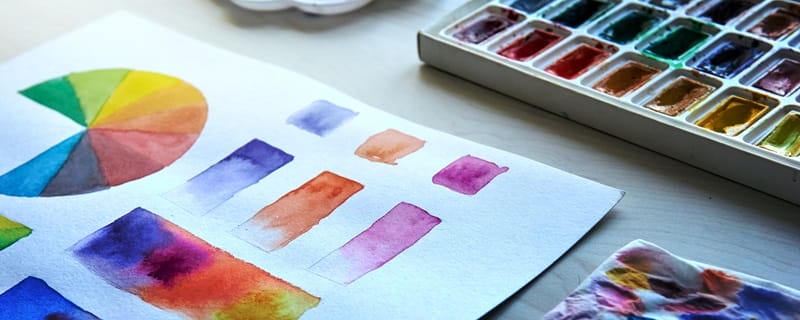
What are the Complementary Color Tones?
Ok, so complementary color tones involve different shades, tints, and tones of the complementary pairs. These shades are created by mixing black into a color, making it darker. Tints are made by adding a little white, making the color lighter. Tones are achieved by adding gray, creating a softer form of the color. Using different tones of complementary colors can add depth and interest to your artsy designs.
What are the Four Color Complementaries?
The four color complementaries refer to two pairs of complementary colors when used together. This technique can create a balanced look while still giving a vibrant contrast. For example:
Using four color complements together can sometimes be a little bit tricky, but it can result in stunning designs. The best way is to experiment and see for yourself how different combinations of colors work together.
Mixing Colors with Color Theory
Now that you have read our blog, you have a new superpower! Understanding and using complementary colors is essential in the world of color. Whether you’re painting a masterpiece, or designing a poster for school, or even picking out an outfit, knowing how to use the complementary color wheel can help you create eye-catching works of art.
Grab your color wheel, and let your creativity run wild with the magic of complementary colors.
Oh, and if you’re still wondering if mustard yellow goes with neon orange, the answer is no!
